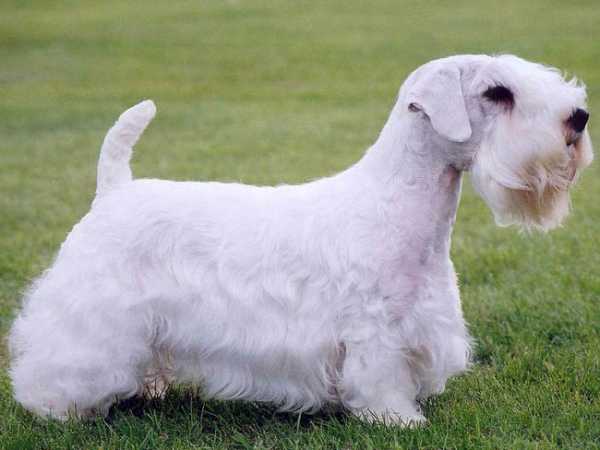Sealyham Terrier
IUCN
LCBasic Information
Scientific classification
- name:Sealyham Terrier
- Scientific Name:Welsh Border Terrier, Cowley Terrier
- Outline:Carnivora
- Family:Canidae
Vital signs
- length:26cm
- Weight:10kg
- lifetime:12-16year
Feature
The Sealyham Terrier is a breed of dog that was completely improved by humans.
Distribution and Habitat
Native to Sealyham, Wales
Appearance
The petite Sealyham Terrier has surprisingly strong hind legs. The long and wide head looks majestic. The horizontal back and broad chest make this small guy have a different charm. The round eyes are dark red, deep and deep, and the distance between the eyes is relatively wide. The ears are neither big nor small, with rounded tips and a black nose. The neck is thick and muscular, with good stretchability and a compact throat. The body is of moderate length, very strong, strong and compact with good flexibility. The back line is horizontal and not tilted, the limbs are short and powerful, the hind legs are slightly longer than the front legs, and there is a sense of lightness. The tail is kept upright.
The coat includes soft undercoat and hard bristles, which can withstand harsh climates and can be trimmed appropriately in summer. The color is all white, and the head and ears may have lemon or brown.
Details
The Sealyham Terrier is a breed that was completely improved by humans. Between 1850 and 1891, it was carefully improved by Captain John Edwards in the Sealyham Territory in Wales. Although there was no record of the exact breeding process at the time, it can be determined that it was a breed of bull terrier, West Highland White Terrier, and short-legged long-bodied terrier, with the addition of the Corgi.

The Sealyham Terrier takes its name from Sealyham, the estate of John Edwards of Upper Haverfordwest in the Welsh town of Haverfordwest. As the Sealyham Terrier's working abilities attracted public interest, they began to replace other breeds of terriers in prominent families and show rings. The first recorded appearance in a dog show was in Haverfordwest, Wales, in October 1903. In January 1908, a group of Welsh dog breeders founded the Haverfordwest Sealyham Terrier Club. At the first meeting they drew up the first Sealyham Terrier breed standard. The first championship show for the Sealyham Terrier was in October 1910 at the British Dog Show. On March 8, 1911, the Sealyham Terrier was recognized by the Kennel Club and received an invitation to the Grand Combined Show of Sealyham Terriers to be held in London on June 10, 1911.
Since its debut in the United States in San Mateo, California in September 1911, the Sealyham Terrier has been popular as a show dog. Among the many honors, the most influential is that the Sealyham Terrier has won the show championship four times at Westminster. The American Sealyham Terrier Club was established on May 15, 1913, with the purpose of promoting interest in the breed in the United States and encouraging its participation in exhibitions and working trials. Working trials were abandoned due to the clutter of large areas in suburban areas and the love of the terrier's owners. Specialty shows are held in the eastern states in the winter, in the midwestern states in the late spring, and in Pennsylvania in the fall as part of the Montgomery Area Kennel Club Terrier Show.
Today the Sealyham Terrier is primarily a companion dog, but given the opportunity it will make an excellent working terrier. It is very sociable, friendly, and a good guard dog, its big dog-like bark keeping intruders away. The Sealyham Terrier is easy to train successfully, but more often than not it will not be willing to accept exercise or juggling. With proper care, a reasonable diet, and proper training, the Sealyham Terrier has a very long lifespan, and it is not uncommon for it to live 12 to 16 years, and it is very active throughout its life.
The Sealyham Terrier requires regular coat care. Since its coat does not shed, this means that dead hair must be plucked or combed out to prevent tangles from forming. Plucking dead hair regularly and trimming the coat on the head, neck, tail and feet to ensure a clean and tidy appearance.
Protect wildlife and eliminate game.
Maintaining ecological balance is everyone's responsibility!








